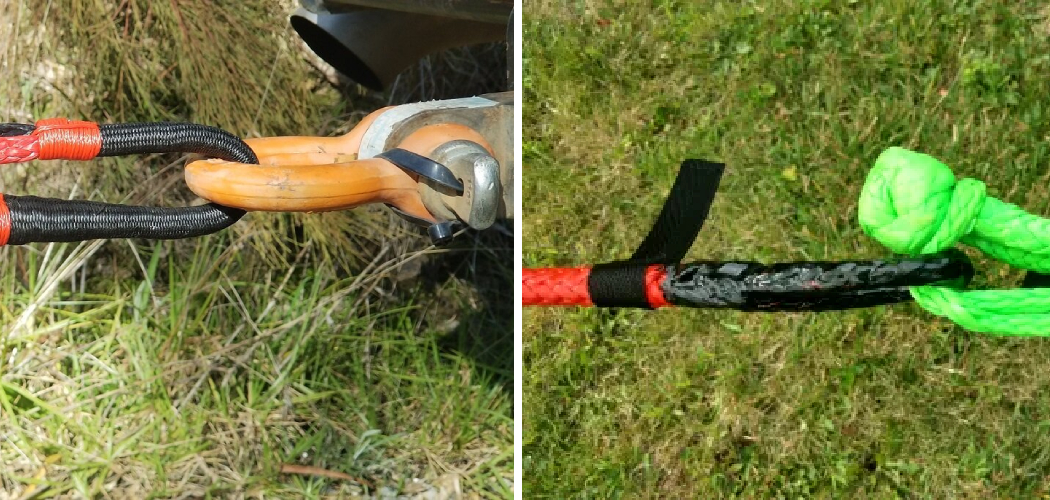Soft shackles are a useful and versatile tool that can come in handy in a variety of situations. They are essentially a strong rope or cordage, typically made of synthetic materials, that is used to secure or connect objects together.
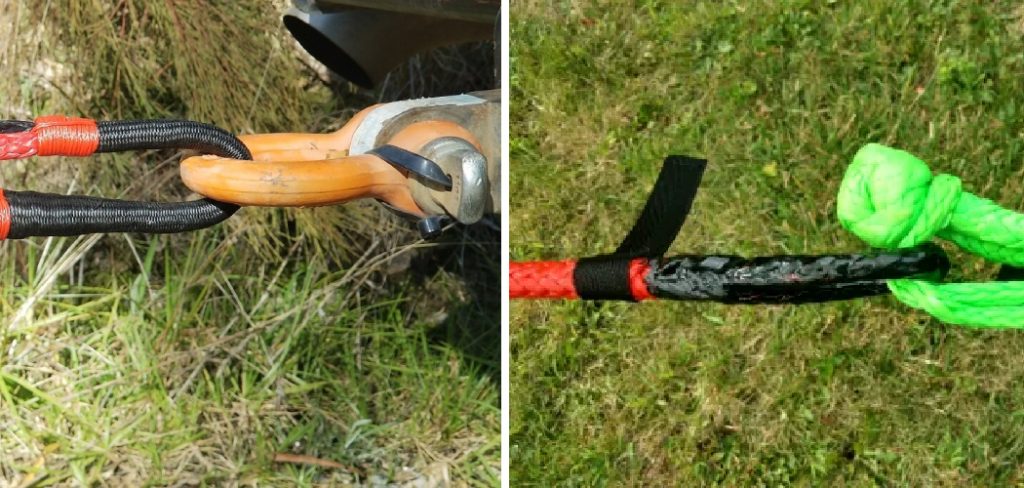
Soft shackles are commonly used in sailing and other marine activities, but they can also be useful for camping, off-roading, and other outdoor activities. In this guide on how to use a soft shackle, we will discuss the basics of what a soft shackle is and how to properly use one in different scenarios.
What is a Soft Shackle
A soft shackle is made up of a loop of rope with a knot or splice at each end. This allows the user to fasten the shackle around an object, such as a sail or rigging, and secure it in place. The main advantage of using a soft shackle over traditional metal shackles is that they are lightweight, easy to handle, and won’t damage or scratch surfaces like metal shackles can. They also have a higher strength-to-weight ratio than metal shackles, making them ideal for heavy-duty applications.
Necessary Items
To use a soft shackle, you will need the following items:
- A soft shackle made of strong and durable rope or cordage
- The object that needs to be secured or connected
- Basic knowledge of how to tie knots or splices (see next section for instructions)
8 Things to Know Before You Start
1) Check the Strength of Your Soft Shackle
Before using a soft shackle, it is important to check its strength and make sure it is suitable for the task at hand. Most manufacturers will provide information on the breaking strength of their soft shackles, so be sure to refer to this before use. It is also a good idea to inspect the shackle for any signs of wear or damage before each use.
2) Understand Your Knots and Splices
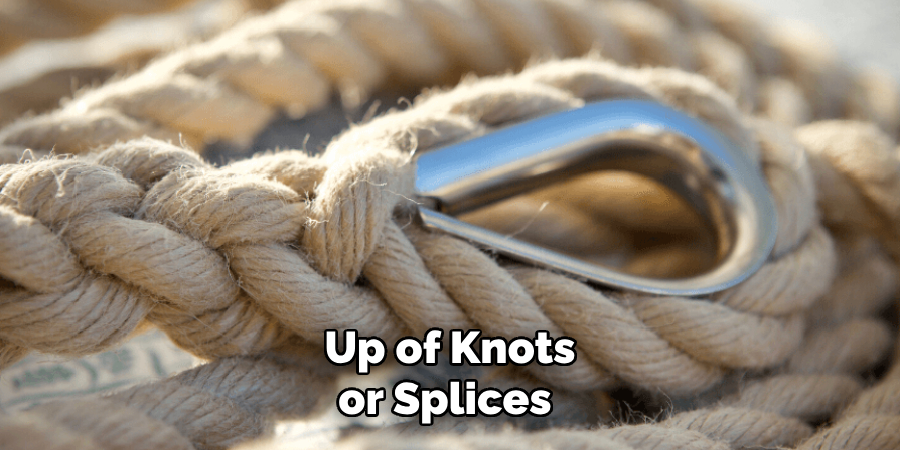
As mentioned earlier, soft shackles are made up of knots or splices at each end. Knowing how to tie these properly is crucial in ensuring the safety and effectiveness of your soft shackle. Some common knots and splices used in soft shackles include the diamond knot, figure-eight knot, and double braid splice.
3) Practice Makes Perfect
Before using a soft shackle in a critical situation, it is important to practice tying the necessary knots and splices. This will help you become more familiar with the process and increase your confidence in using them.
4) Consider the Weather
If you are using a soft shackle in marine activities, be mindful of weather conditions. Wet or windy weather can make it difficult to handle the rope and tie knots accurately. If possible, try to use a sheltered area or wait for better weather before attempting to use a soft shackle.
5) Think About Load Direction
When attaching the soft shackle to an object, consider the direction of the load. The strength of the shackle may vary depending on which way the load is pulling, so be sure to refer to manufacturer guidelines and use the shackle accordingly.
6) Avoid Sharp Edges

Soft shackles are not as durable as metal shackles and can be damaged by sharp edges. Be mindful of this when securing objects, and try to avoid any potential damage to the shackle. While soft shackles are strong, they should not be used in situations where they may come into contact with sharp edges.
7) Keep it Clean
As with any piece of equipment, it is important to keep your soft shackle clean and free from debris. Dirt and sand can decrease the strength of the shackle and cause unnecessary wear and tear. And if you’re using the shackle in saltwater, be sure to rinse it with fresh water after use to prevent corrosion.
8) Know When to Replace Your Soft Shackle
Like any other piece of equipment, soft shackles have a limited lifespan and will eventually need to be replaced. Inspect your soft shackle regularly for signs of wear and tear, and be sure to replace it if you notice any damage or weakening of the rope.
Soft shackles are a versatile and valuable tool that can be used in various situations. By following the necessary precautions and having the right knowledge and equipment, you can safely and effectively use soft shackles to secure or connect objects together. So next time you’re out on the water or heading into the great outdoors, consider adding a soft shackle to your gear for added convenience and efficiency.
12 Steps on How to Use a Soft Shackle
Now that you have all the necessary items and knowledge, here is a step-by-step guide on how to use a soft shackle:
Step 1: Identify the Object to be Secured
First, identify the object that needs to be secured or connected. This can be a sail, rigging, tent, or any other item. If the object has a hole or eyelet, make sure the soft shackle will fit securely through it.
Step 2: Measure Length
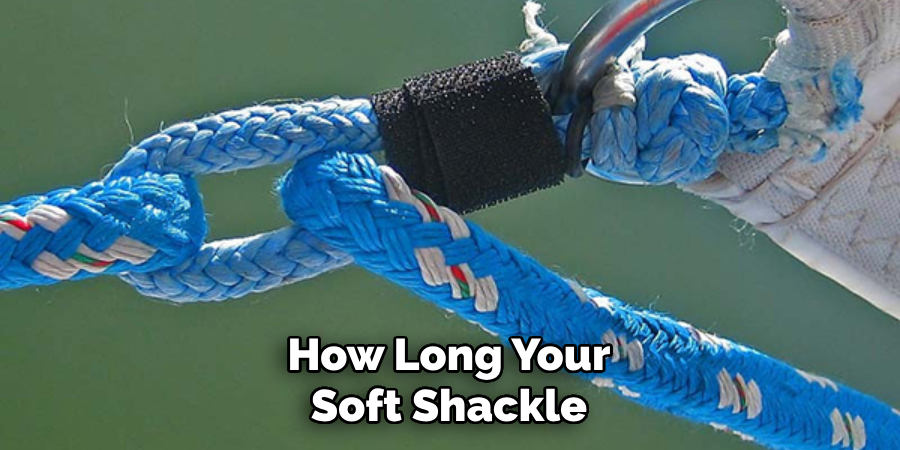
Measure the circumference of the object to be secured. This will help determine how long your soft shackle needs to be. It’s always better to have extra length, so it’s recommended to add a few inches to your measurement.
Step 3: Tie the First Knot
Using your preferred knot or splice, tie a secure loop at one end of the soft shackle. Make sure the loop is large enough to pass through the object but not too big that it may slip off. And be sure to leave enough of a tail at the end for later use.
Step 4: Pass the Loop Through the Object
Pass the loop through the hole or eyelet on the object that needs to be secured. However, do not fasten the loop or knot yet. And make sure the loop is not twisted.
Step 5: Tie the Second Knot
At the other end of the soft shackle, tie another knot or splice to create a second loop. Again, make sure the loop is large enough to pass through but not too big that it may slip off. As with the first knot, leave a tail at the end for later use.
Step 6: Pass the Loop Through
Take the second loop and pass it through the first loop on the other end of the soft shackle. Make sure both loops are aligned and not twisted. If your soft shackle has multiple wraps, make sure they are all passing through each other.
Step 7: Tighten the Knots
With both loops now connected, tighten the knots at each end of the soft shackle. Make sure they are secure, and check for any twists or tangles. And again, leave a tail at the end for later use.
Step 8: Secure the Tail Ends
Take the tail ends of both knots and secure them together with an overhand knot. This will prevent the loops from coming undone. But be sure to leave enough length in the tail ends for later use.
Step 9: Check Strength
Before using the soft shackle, check its strength and make sure it is suitable for the task at hand. Refer to manufacturer guidelines for information on breaking strength. While soft shackles are strong, it’s always better to err on the side of caution and not use them for tasks that require more strength than they can handle.
Step 10: Attach to Object
With the soft shackle now securely tied, you can attach it to the object that needs securing. Make sure the load direction is correct and follow any specific instructions or precautions given by the manufacturer.
Step 11: Release and Store
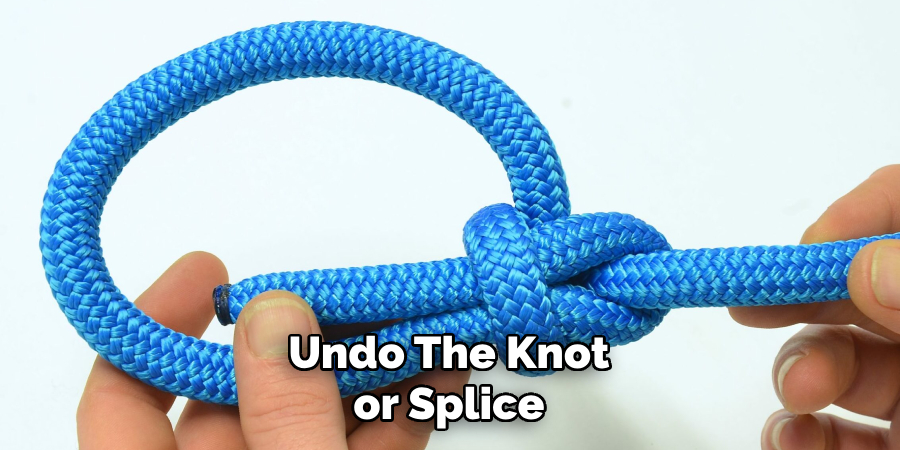
When you’re finished using the soft shackle, simply undo the knot or splice and release it from the object. Be careful not to let it snap back, as this can cause damage or injury. Then, store the soft shackle in a clean and dry place for later use.
Step 12: Inspect and Replace
After each use, inspect your soft shackle for any signs of wear or damage. If there are any issues, it’s important to replace the soft shackle before using it again. And even if there are no visible issues, be sure to regularly replace your soft shackle according to manufacturer guidelines or after a certain amount of usage. This will ensure the safety and effectiveness of your soft shackle in the long run.
Soft shackles are a useful and convenient tool for securing or connecting objects together. By following these guidelines on how to use a soft shackle and using proper techniques, you can safely and effectively use soft shackles for various tasks. Just remember to always prioritize safety and regularly check and replace your soft shackle when necessary.
8 Things to Avoid When Using Soft Shackles
While soft shackles are strong and versatile, there are certain things you should avoid when using them to ensure safety and effectiveness. Here are eight things to avoid when using soft shackles:
1) Sharp Edges

As previously mentioned, sharp edges can cause damage to a soft shackle. Be sure to avoid using them in situations where they may come into contact with sharp edges, such as rough surfaces or objects with sharp corners.
2) Excessive Force
Soft shackles have limited breaking strength and should not be used for tasks that require excessive force. Be sure to check the manufacturer guidelines and use them within their recommended weight limit.
3) Twisting
Twisting or kinking the soft shackle can weaken its strength and cause damage over time. Be sure to check for any twists or tangles before using the soft shackle, and avoid twisting it during use. And if you notice any twists or tangles, carefully untangle them before using the soft shackle.
4) Sun Exposure
Prolonged exposure to sunlight can cause UV damage to the fibers of a soft shackle, weakening its strength. Be sure to store your soft shackle in a cool and dry place when not in use. But if you must use it in direct sunlight, be sure to regularly check for any signs of damage and replace it as needed.
5) Chemical Exposure
Certain chemicals can also cause damage to the fibers of a soft shackle. Avoid using them near harsh chemicals or substances that may corrode or weaken the material. So if you’re working in an industrial setting or near any chemicals, it’s best to opt for a metal shackle instead.
6) Overloading
Overloading a soft shackle can cause it to fail and potentially cause harm or damage. Be sure to always use the appropriate size and weight limit for your task at hand. And if you’re unsure about the weight limit, it’s always better to err on the side of caution and use a stronger or larger shackle.
7) Improper Storage
Improperly storing a soft shackle can cause damage over time. Be sure to store it in a clean and dry place when not in use, and avoid throwing it in with other tools or equipment that may cause wear and tear.
8) Ignoring Wear and Tear
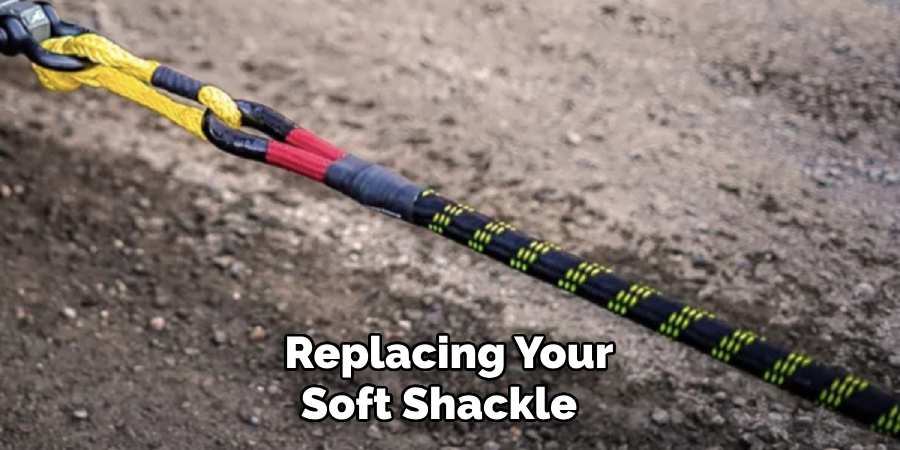
Regularly inspecting and replacing your soft shackle is crucial for safety and effectiveness. Be sure to check for any signs of wear or damage after each use and replace it as needed according to manufacturer guidelines. Ignoring wear and tear can lead to accidents or failures when using a soft shackle.
So always prioritize safety and replace your soft shackle when necessary. With proper care and usage, soft shackles can be a reliable tool for various tasks. But it’s important to also be aware of the potential risks and take precautions to avoid them. By avoiding these things and regularly maintaining your soft shackle, you can ensure its longevity and effectiveness for future use.
8 Additional Tips for Using Soft Shackles Safely
Aside from avoiding certain things, here are eight additional tips for using soft shackles safely:
1) Know the Weight Limit
Be sure to always check the weight limit of your soft shackle before use. Exceeding the weight limit can cause it to fail and potentially cause harm or damage. As a general rule, soft shackles are not suitable for heavy lifting tasks and should be used for lighter loads only.
2) Use the Correct Size
Using a soft shackle that is too small or too large for your task can also lead to potential failures. Be sure to use the appropriate size and check the measurements before using it. So if you’re unsure, it’s always better to use a larger size or opt for a metal shackle instead.
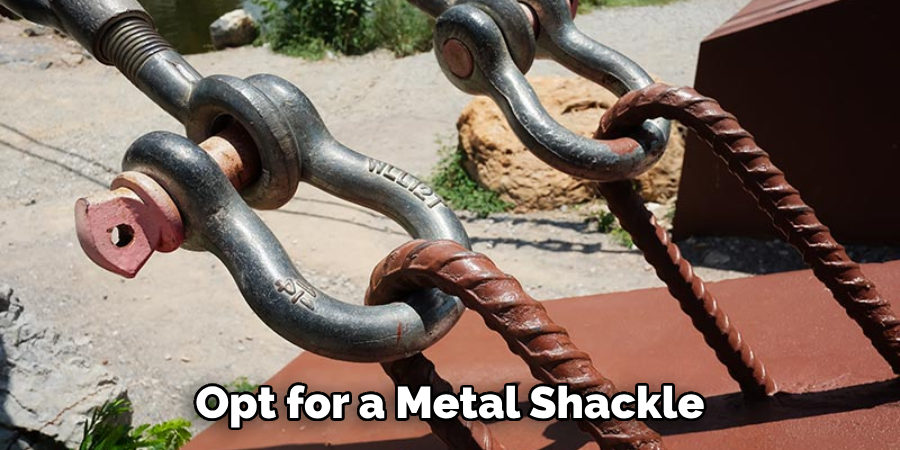
3) Check and Double Check
Before using your soft shackle, be sure to check the load direction and inspect it for any twists or tangles. Before applying any weight or force, double-check that the soft shackle is properly secured and aligned.
4) Use Proper Technique
Using improper techniques, such as over-tightening or using the soft shackle in a way it’s not intended for, can cause damage and failures. Be sure to always follow manufacturer guidelines and use proper techniques when handling a soft shackle.
5) Have Backup Options
In case of any potential failures or emergencies, it’s always best to have backup options available. This can include having spare soft shackles or metal shackles on hand, as well as knowing alternative ways to secure or connect objects.
6) Educate Others
If you’re working with a team or using soft shackles in a group setting, be sure to educate others on the proper usage and safety precautions. This can help prevent accidents and ensure everyone is on the same page when using soft shackles.
7) Regularly Inspect and Replace
Regularly inspecting your soft shackle and replacing it as needed is crucial for safety. Be sure to incorporate this into your regular maintenance routine to ensure the longevity and effectiveness of your soft shackle.
8) Seek Professional Help
If you’re unsure about using soft shackles or have any concerns, it’s always best to seek professional help. This can include consulting with experts or attending training sessions on proper usage and safety measures for soft shackles.
By following these additional tips on how to use a soft shackle, you can further ensure the safe and effective use of soft shackles in various tasks and situations. So, stay informed and take proper precautions to avoid potential risks while using soft shackles. With these tips in mind, you can confidently use soft shackles as a convenient and versatile tool for your needs.
Frequently Asked Questions About Soft Shackles
Can I Use a Soft Shackle for Heavy Lifting Tasks?
No, soft shackles are not suitable for heavy lifting tasks and should only be used for lighter loads. Exceeding the weight limit of a soft shackle can cause it to fail and potentially lead to accidents or damage.
Are Soft Shackles Stronger Than Metal Shackles?
It depends on the specific material and design of the shackle. In general, metal shackles have higher breaking strengths compared to soft shackles. However, soft shackles can still be strong enough for most tasks if used within their weight limit and with proper care.
Can I Use a Soft Shackle in Place of a Metal Shackle?
It depends on the task at hand. Soft shackles are more suitable for lighter loads and situations where avoiding damage to surfaces is important. For heavy lifting tasks or working with harsh chemicals, it’s best to opt for a metal shackle instead.
How Often Should I Replace My Soft Shackle?
It’s recommended to regularly inspect your soft shackle after each use and replace it as needed according to manufacturer guidelines. Any signs of wear or damage are indications that the soft shackle should be replaced immediately.
Can I Repair a Damaged Soft Shackle?
No, soft shackles cannot be repaired once they are damaged. It’s important to always replace them as needed to ensure safety and effectiveness. Attempting to repair a damaged soft shackle can lead to potential failures and accidents.
Conclusion
Soft shackles can be a convenient and versatile tool for various tasks, but it’s important to use them safely and with caution. By following proper usage techniques on how to use a soft shackle, regularly maintaining and inspecting your soft shackle, and avoiding certain risks, you can ensure its longevity and effectiveness.
If you’re ever unsure about using a soft shackle or have any concerns, always seek professional help. With these tips in mind, you can confidently use soft shackles for your needs and prioritize your safety while doing so. So go ahead and utilize the benefits of soft shackles with caution and care!

